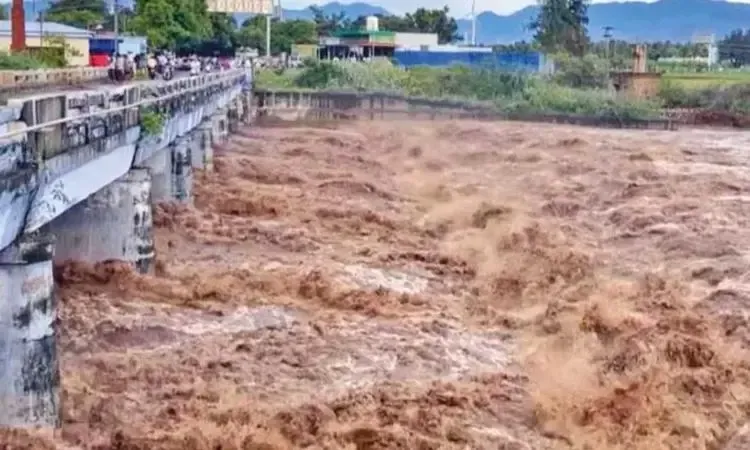Why is the Vaigai dam's water level rising sharply?

Synopsis
Key Takeaways
- First-stage flood alert issued for five Tamil Nadu districts.
- Water level at the Vaigai dam has increased by five feet in 24 hours.
- Inflow increased tenfold from 2,268 cusecs to nearly 24,000 cusecs.
- Precautionary measures are being implemented for downstream residents.
- Potential agricultural benefits for local farmers with assured irrigation supply.
Chennai, Oct 19 (NationPress) Officials have issued a first-stage flood alert for residents residing along the banks of the Vaigai River in the districts of Theni, Madurai, Dindigul, Sivaganga, and Ramanathapuram, following a significant spike in the water level of the Vaigai dam after persistent heavy rainfall over the last few days.
Official statistics indicate that the water level at the Vaigai dam reached 66 feet on Saturday evening, representing a five-foot increase within a 24-hour period.
This increase has been linked to considerable inflows from the Vaigai, Suruli, and Kottakudi rivers, which have surged due to torrential downpours in Theni and nearby hilly areas.
Officials reported that the dam's inflow escalated from 2,268 cusecs at 6 a.m. to nearly 24,000 cusecs by 11 a.m. on Sunday, marking a tenfold rise in just a few hours. This swift inflow prompted an urgent response downstream.
The Public Works Department (PWD) and local administrations have started notifying residents in lower-lying regions and near riverbanks to remain alert and prepare for potential evacuations if water is released.
Authorities stated that a second-stage flood alert will be triggered when the water level hits 68.5 feet, followed by a final alert at 69 feet, the threshold at which excess water will be released into the Vaigai River to prevent overflow.
Despite concerns among downstream residents, the situation provides relief to farmers in these five districts.
With the dam likely to reach full capacity early in the upcoming northeast monsoon season, agricultural activities—particularly the samba paddy crop—are set to benefit from a reliable water supply for irrigation.
However, officials warned that if heavy rainfall persists, rapid and large-scale releases of water from the dam may be necessary, which could lead to temporary flooding in riverbank communities.
Disaster response teams and local authorities are prepared to address any emergencies arising from a further increase in the dam's water level.









